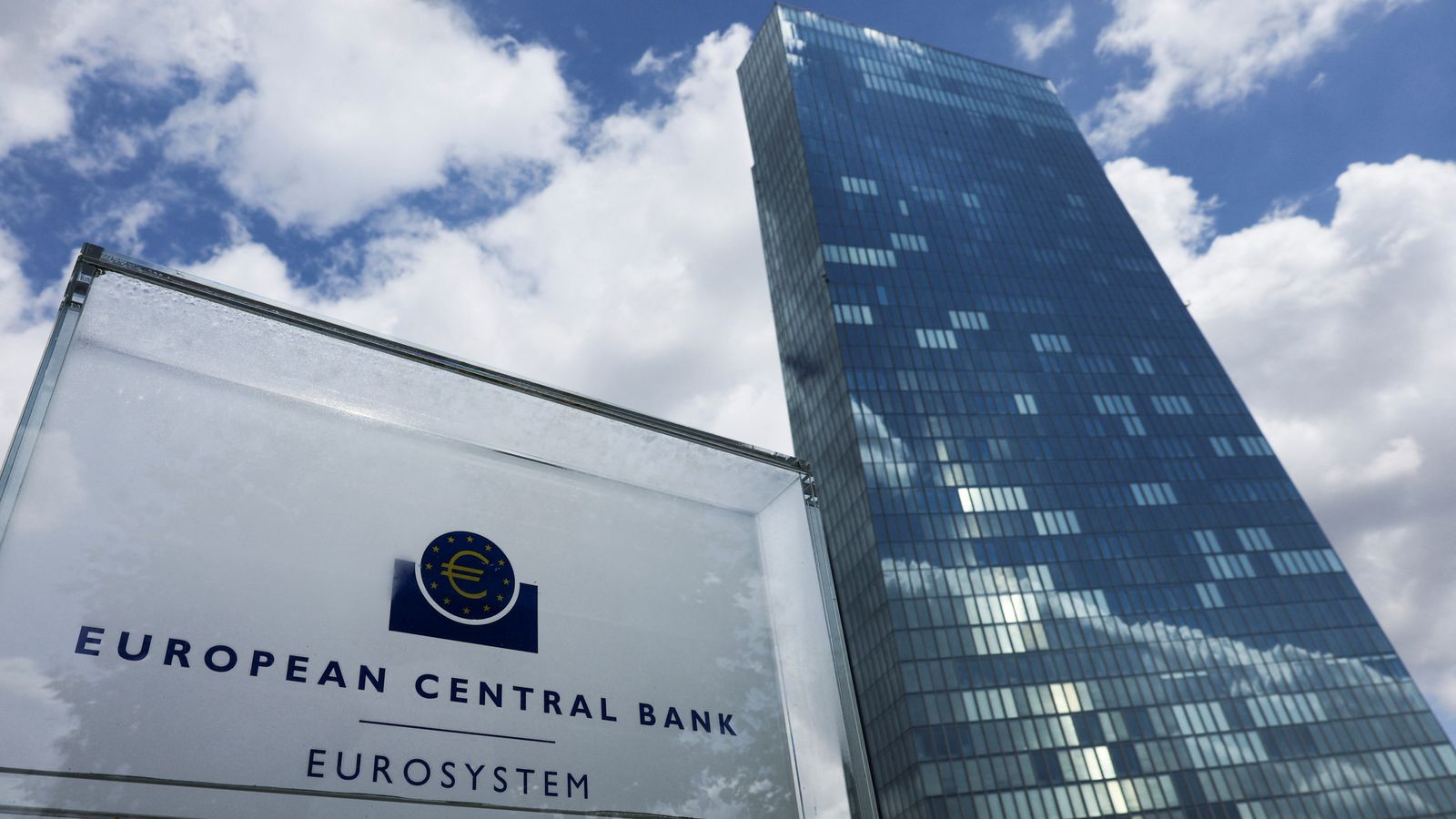Analysis
Sticky inflation confirms there is more for the European Central Bank to do
Sky’s Ian King casts his eye over the latest inflation figures coming out of the euro area, which show a mixed picture for the policymakers in Frankfurt to grapple.
Ian King
Business presenter @iankingsky
Thursday 30 March 2023 15:15, UK
Listen to this article
0:00 / 3:36
1X
BeyondWords
Audio created using AI assistance
Signage is seen outside the European Central Bank (ECB) building, in Frankfurt, Germany, July 21, 2022. REUTERS/Wolfgang Rattay
Why you can trust Sky News
Last week’s surprise rise in the headline rate of inflation in the UK brought a reminder, if one were needed, of how hard it is, once the inflation genie is out of the bottle, to put it back in.
Thursday brought a further reminder with news that consumer prices in Germany continued to rise this month at a faster pace than expected.
The annual rate of consumer price inflation in the eurozone’s biggest economy in March came in at 7.4% when measured by Germany’s national standards. That was down from the rate of 8.7% in both January and February but ahead of the 7.2% figure the market had been expecting.
An alternative measure, which is harmonised to EU standards, came in at 7.8%, again down from 8.7% in February, but again ahead of the 7.5% that the market had expected.
As in the UK, food prices are exerting most upward pressure on inflation in Germany. They rose by 22.3% on a year-on-year basis – undoing much of the good done by a slowdown, to 3.5%, in the annual rate at which energy prices are rising.
News of the figures sent the yield (which moves in the opposite direction to the price) of German government bonds higher.
That move reflected the fact that the higher-than-expected figures will maintain pressure on the European Central Bank (ECB) to continue raising interest rates.
Paul Kelso2:26
Play Video – Unexpected rise in UK inflation
Unexpected rise in UK inflation
The ECB raised its main policy rate two weeks ago from 2.5% to 3%.
Yet the difficulty of the task faced by the ECB – which has to set an interest rates for a 20-country bloc that goes from Ireland and Portugal in the west to Cyprus in the east and from Finland in the north to Malta in the south – was underlined by figures published separately in Spain.
Spain’s annual rate of inflation fell from 6% in February to just 3.3% in March – significantly lower than the 3.8% that economists had expected.
On the harmonised basis used by the EU, Spanish inflation fell from 6% in February to 3.1% in March, again significantly below the 4% that economists had expected.
Food prices climbed by 16% year-on-year. The fact that Spanish food prices grew at a lower rate than in Germany is partly explained by Madrid’s decision, just after Christmas, to cut the rate of VAT on essential foods such as bread, cheese, fruit, milk and vegetables from 4% to zero and to cut the VAT rate from 10% to 5% on pasta and cooking oils.
Tomatoes are seen for sale on a fruit and vegetable stall at Alsager market, Stoke-on-Trent, Britain, August 7, 2019. REUTERS/Andrew Yates
Image:
Bad weather in Spain during January helped push up food prices because of crop damage
Read more from business:
Ofgem U-turn after threatening newspaper over prepaid meters exposé
UK private sector shrinks for eighth consecutive quarter
What will probably jog the ECB to carry on raising interest rates, though, is the fact that, even with this big decline in Spain, so-called ‘core’ inflation – the measure than strips out volatile elements such as energy, food, drink, alcohol and tobacco – remains very sticky. In Spain, it fell very modestly, easing from 7.6% to 7.5%.
This is probably the more important measure, in the eyes of the ECB, because it is an indication of how domestically-generated inflation is becoming entrenched rather than inflation in energy, food and drink, much of which can be explained by external factors, chiefly Russia’s invasion of Ukraine.
On that basis, further interest rate rises from the ECB in coming months remains the way to bet.






























